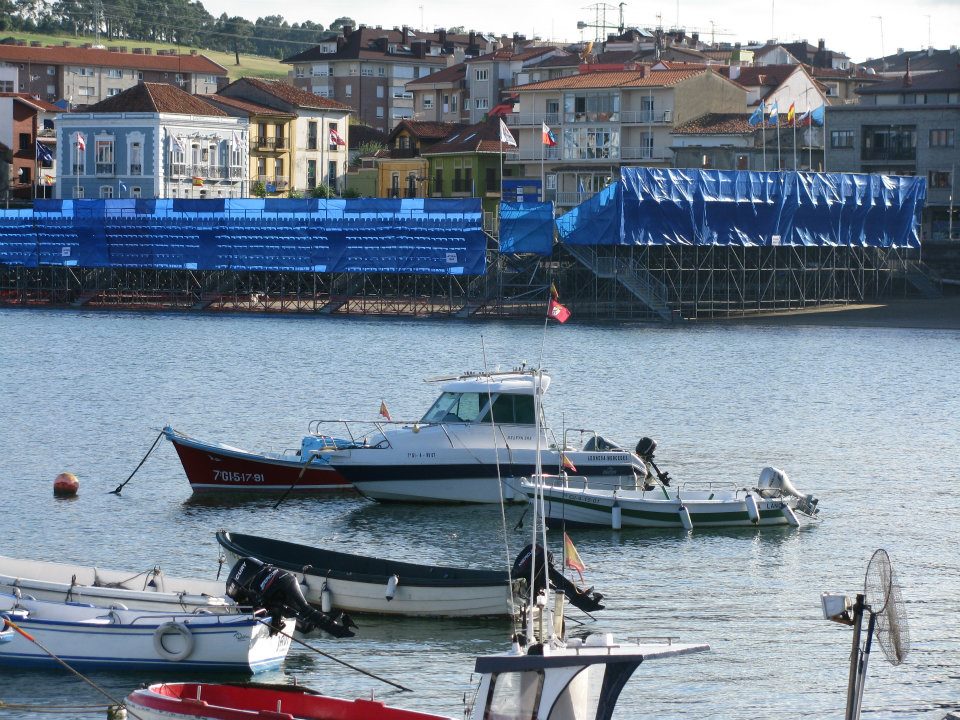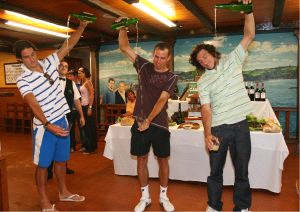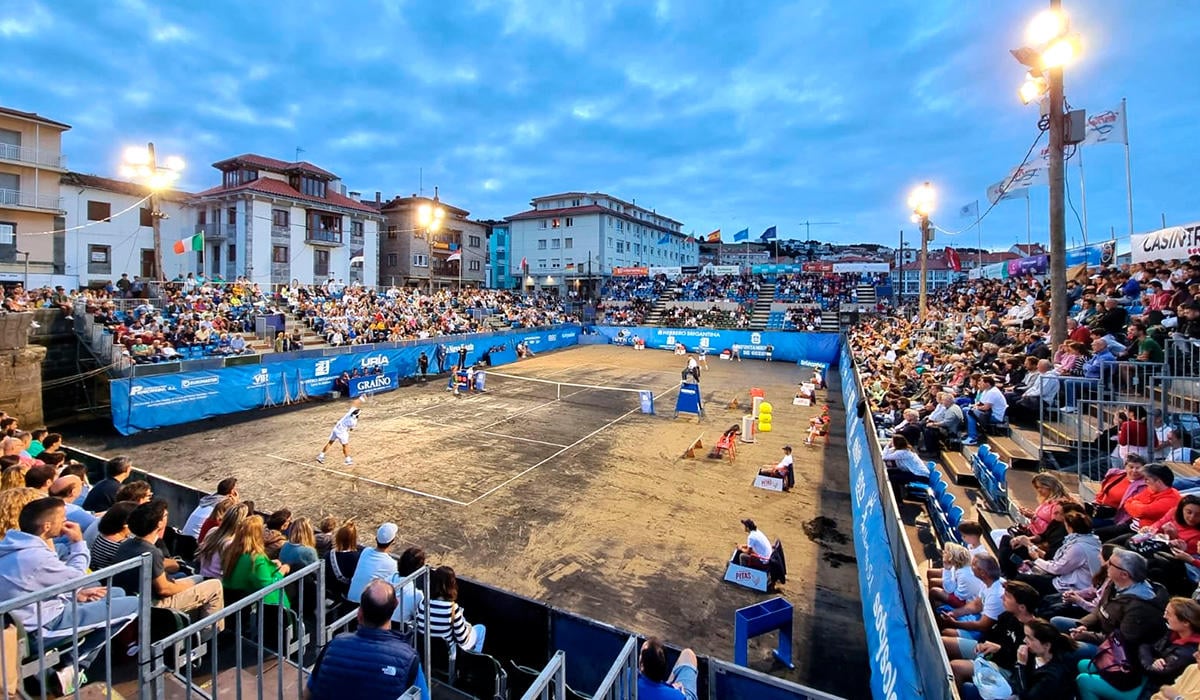MADRID – Not clay, nor grass. Neither hard court. It’s tennis on sand. In Asturias, in northern Spain, where the Cantabrian Sea transforms the landscape of the seaside with its radical tidal changes, a unique tournament is played annually: the Luanco Beach Tennis Tournament.
On La Ribera beach, when the sea recedes dramatically and makes the sandy soil compact, the seaweed and stones are removed; the metal plates are nailed to delimit the singles court, and the net and the judges’ and players’ chairs are put in place. The photo, which for a few hours is pure salt water, then becomes a peculiar tennis stadium.
On the shore are installed bleachers for 2000 spectators. Necessarily, accompanied by light poles, which allow the tennis to be played late at night, the time when the waves break far away from there during summer.
Since its first edition in 1971, on the initiative of a group of friends who got together on the beach as an alternative to play in the absence of specific facilities, important names in world tennis such as Juan Carlos Ferrero, Carlos Moyá, Gastón Gaudio, Álex Corretja, David Ferrer, Guillermo Cañas, Juan Mónaco, or Pablo Carreño have passed through the exhibition.

In 2023, for its thirty-sixth edition, the tournament featured Frenchman Richard Gasquet and Feliciano López, who was honored after his retirement from professional tennis. The final was won by the Lithuanian Edas Butvilas, who defeated the Spaniard Miguel Avendaño, son of Juan Avendaño, the tournament’s top champion: nine titles in the 1970s and 1980s. Today the trophy is named after him.
“What I remember best is how spectacular it is to play there listening to the sea. The games start very late waiting for the tide to go away. As the night progresses, you worry about finishing early, thinking that at any moment the sea will return,” Jaime Fillol, champion of the 1982 edition, tells CLAY. He beat Spain’s Miguel Mir in the final.
The Chilean explains what a compact sand tennis court is like: “The ball bounces very little, obviously because of the wetness of the court. But it is a firm court. It was good for me, because I did a lot of serve and volley. Also tried to chip and charge a lot”.
Another peculiarity of this unorthodox tennis is the factor of the inclination of the court, which can be key in the development of any match if used strategically.
“When it’s time to run in the direction of the slope, you go for it! The problem is when the rivals throw it to the other side. It’s very difficult to get there running uphill. The event is a very beautiful spectacle. Now the court has grandstands on all four sides, but in my time one part was open next to the waterfront and it was very interesting because the people who passed by there could see the tennis,” Fillol explained.

“Apart from the fact that the food is spectacular in Luanco”, adds the former 14th in the world. This is also a very special feature that foreigners fall in love with. The cider culture is as well enjoyed, and the guests learn how to pour it in the local way: keeping distance between the bottle and the glass so that it is shaken and aired to awake the natural carbonic gas and expand the aroma of the drink.
An important part of Asturian culture. Things of the strange world of tennis on the beach.







